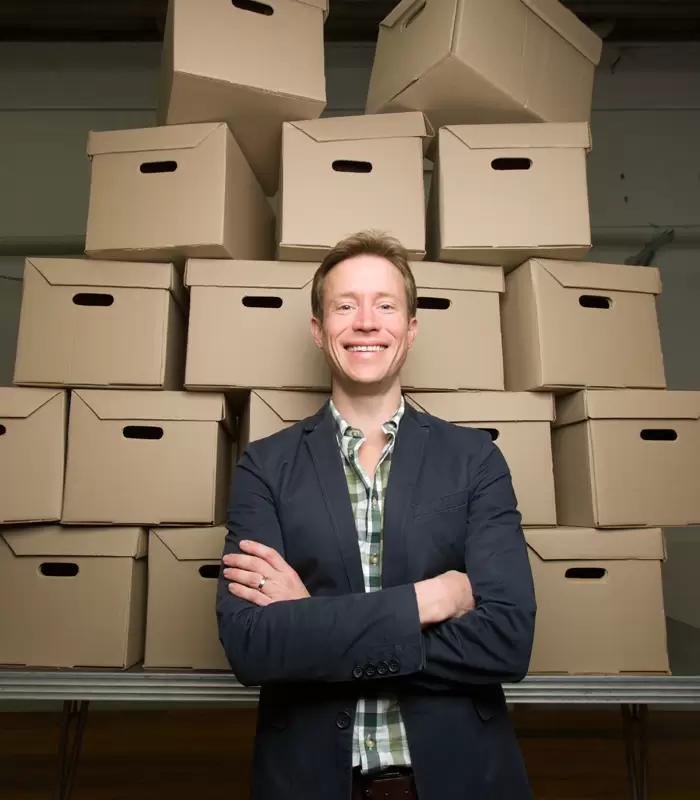Company founder and systems engineer Dr James Chin Moody says the idea and the product are just the start – the real work is making it stand out in a crowded market.
Dr James Chin Moody’s career has taken him from systems engineering on satellites to innovation at CSIRO to disrupting the package delivery sector. He sat down with create to share how his engineering background helped him find his business niche and build success.
create: You started out as a satellite engineer then moved into business and leadership roles early on in your career. What motivated that transition?
James Chin Moody: My dad’s side of the family are all engineers. I always wanted to be an engineer and early in my career I was really lucky to build a satellite. But my mother’s side are in creative industries. My grandmother was a painter and my grandfather was a photographer. I saw how that was all about impact and I realised that one of the things I wanted to do was have an impact. I think the true role of an engineer is to have an impact on society through what we create.
That desire took me to CSIRO where I ended up running the business development function. But after seven years I realised I wanted to go and build again, build something that’s going to have impact on the world and that’s where came from.
create: So what is Sendle?
JCM: Sendle is a parcel delivery service built for the needs of small businesses. We found a way of using technology to unlock idle capacity in existing courier networks so that we can then send parcels anywhere in Australia. It’s cheaper than lining up at the post office, and includes door-to-door delivery.
create: Amazon and others are also trying to disrupt this space. How difficult is that for your business when various people are trying to do the same thing at the same time?
JCM: Our customers are not the Amazons of this world. They’re the Pablo & Rustys of this world: companies that basically have small online stores that need a much better way of fulfilling their orders. So I guess the first thing we realised is that it’s far better, in the age of the internet, to be 100 per cent good for 30 per cent of the market than it is to try to be 80 per cent good for 100 per cent of the market.
You’ve got to focus on something. So yes, there’s some competition around, but who’s just trying to focus on doing that for small business? It’s very hard to find them.
create: What part would you say your engineering background has played in the development of this idea?

JCM: I’m still a systems engineer. That means you think about the broader system when you solve problems. And I think this is the way that we approach things at Sendle. What we’re trying to be is really good systems integrators – taking things that exist and putting them together in ways that create benefits to customers.
We’re not just trying to solve the problem now. We’re trying to make sure that every single time this problem ever comes up, it will be solved. And for me, that’s the thinking as an engineer.
Of course there’s a whole lot of other things around being familiar with technology and understanding how to build stuff in an age where technology is busily changing many business models.
But at the very heart, I think it’s about the training I received as a systems engineer and how you can apply that not just to technological development, but to marketing, customer service, or everything you can approach from a systems point of view.
create: What advice would you give to other engineers trying to develop an idea into a successful business?
JCM: The best bit of advice is, if you’re designing things, don’t just design the black box that is the product. But actually start to design: How are people going to hear about this product? How are they going to use it? There’s actually a much broader system around your product than you might realise. If you’re not careful, founders who are engineers can get trapped into just thinking about building the best product. It’s got to be product plus what they call traction, or the way your product gets to market. And you can actually engineer all of that.